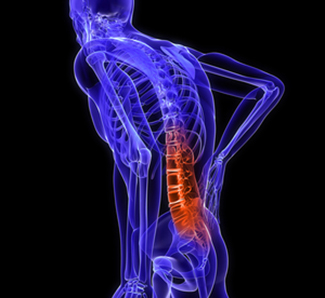Cauda Equina Syndrome symptoms: pain in lower back, buttocks and running down legs, also bowel and bladder problems.
Condition and Causes

The spinal cord travels from the brain to the the first vertebra in the lumbar section of the body. From there, it branches off into many different nerve roots that travel to the lower body and legs. These roots carry signals back and forth between the body and the brain, which allows for mobility and sensation. The bunch of nerve roots at the end of the spinal cord is called the cauda equina, which means "horse's tail." When the spinal cord narrows, it compresses the cauda equina, causing cauda equina syndrome. Compression can occur due to many reasons, including disc herniation, trauma, spinal stenosis, and tumors. It can also be caused by inflammatory or infectious conditions, as well as problems with previous medical procedures. Cauda equina syndrome is a serious condition. If left untreated, it can cause incontinence, paralysis, and problems with movement and sensation.
Symptoms and Diagnosis
Symptoms of cauda equina syndrome include pain in the lower back, pain in one or both legs that begins in the buttocks and travels down to the back of the thighs, and bowel and bladder problems. A patient with cauda equina syndrome may also have a loss of sensation in the groin or saddle area and a lack or loss of reflexes, sensation, and muscle strength in the lower extremities.
In order to diagnose cauda equina syndrome, the physician will go over the patient's medical history and follow with a physical exam. During the exam, the physician will focus on the patient's sensation, strength, reflexes, stability and mobility.
The diagnosis may be confirmed with an X-ray, MRI, or CT scan. The physician may also order a bone scan or a myelogram.
Treatment
Depending on the cause of the condition, treatment may vary slightly. Anti-inflammatory medication can help if the patient's cauda equina syndrome is caused by an inflammatory condition like ankylosing spondylitis. However, surgery to take pressure off of nerve roots is recommended for most patients with cauda equina syndrome. In patients with sudden onset of the syndrome, surgical decompression should be done within 48 hours to avoid extensive neurological damage. Once nerves are decompressed, the physician will treat the origin of the condition. This treatment will depend on the cause. For example, a laminectomy or a discectomy may be needed if a herniated disc caused the cauda equina syndrome, or chemotherapy if the cause was a tumor.
